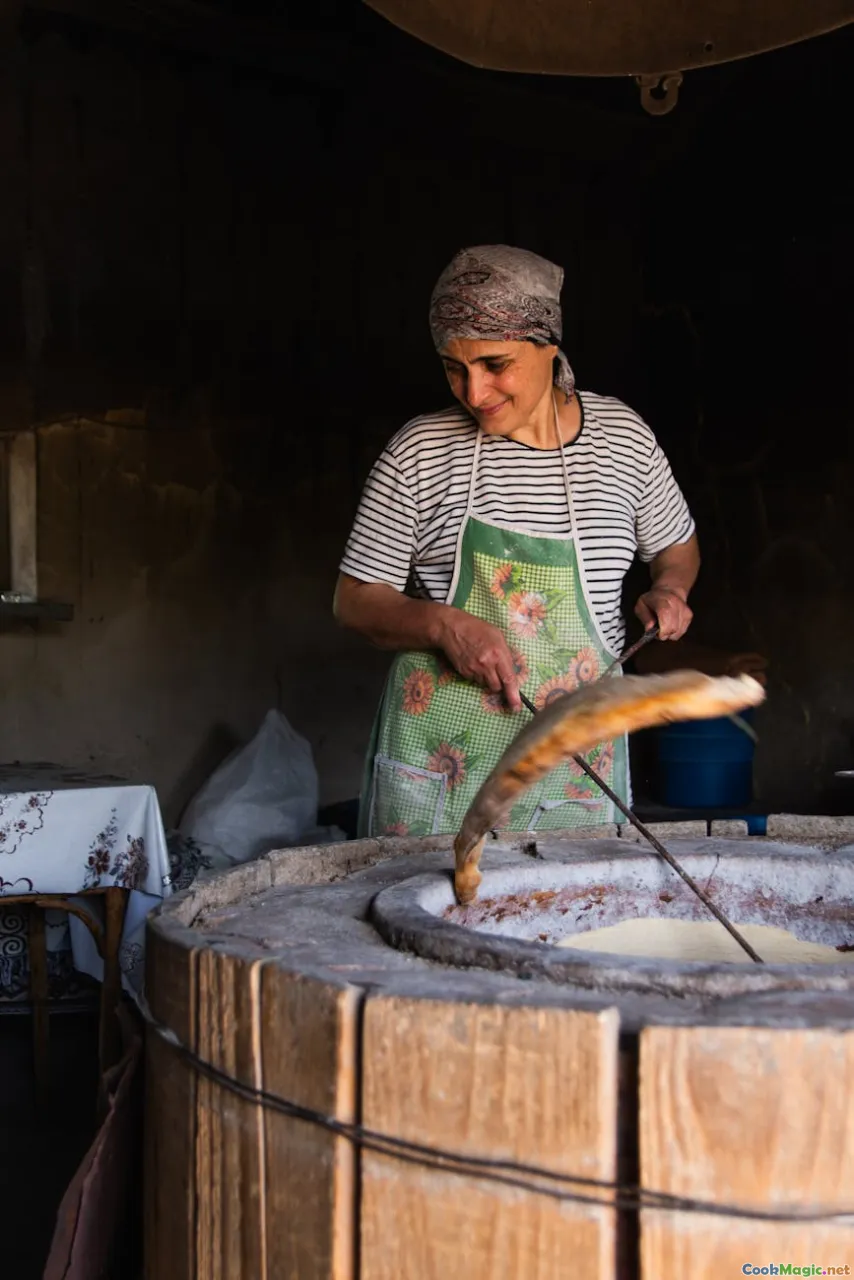Traditional Serbian Bread Techniques Explained
8 min read Discover the rich history and authentic techniques behind Serbian bread-making, a cornerstone of cultural and culinary identity. May 03, 2025 18:00
Traditional Serbian Bread Techniques Explained
Imagine walking through a bustling Serbian village at dawn, where the aroma of freshly baked bread drifts through the air like an ancient lullaby. It’s not just bread; it’s a living testament to centuries of tradition, community, and craftsmanship. Serbian bread isn’t merely a staple food—it’s a cultural expression, woven into the fabric of everyday life, celebrations, and rituals.
The Cultural Significance of Serbian Bread
In Serbia, bread is more than sustenance; it’s a symbol of hospitality, prosperity, and spiritual connection. Traditionally, bread was baked in wood-fired ovens, and the process was a communal activity passed down through generations. Each loaf tells a story—of family, land, and identity.
From the rustic villages of Šumadija to the bustling streets of Belgrade, Serbian bread embodies regional flavors and techniques, each with its own unique character. Understanding these methods offers not just culinary insight but also a window into Serbia’s soul.
Historical Roots of Serbian Bread Techniques
Serbian bread-making has deep historical roots, dating back to the medieval period, where monasteries and households alike treasured the art of baking. The Ottoman influence, combined with Slavic traditions, created a rich tapestry of methods emphasizing simplicity, natural ingredients, and patience.
Ancient recipes favored sourdough fermentation, which not only enhanced flavor but also improved preservation—a crucial factor before modern refrigeration. The use of local grains, especially wheat and corn, shaped the texture and taste distinctive to Serbian loaves.
Core Techniques and Their Cultural Context
1. The Choice of Flour and Ingredients
Serbian bakers have traditionally relied on locally milled wheat flour, often coarse and hearty, lending a dense yet chewy texture. In some regions, rye or cornmeal is incorporated, adding depth and a rustic feel. Fresh yeast or natural sourdough starters are preferred for leavening, emphasizing natural fermentation over commercial yeast.
2. The Art of Fermentation
Fermentation is the heartbeat of Serbian bread. Bakers often prepare a sourdough starter from wild yeasts, cultivated from the environment or inherited from previous generations. This starter is nurtured over days, developing complex flavors and ensuring the dough’s elasticity.
The slow fermentation process—sometimes lasting up to 24 hours—allows the dough to develop a tangy flavor, a chewy crumb, and a crispy crust. It’s a labor of patience, reflecting respect for tradition.
3. Kneading and Shaping
Once fermented, the dough is kneaded by hand—an act believed to connect the baker to the bread. The kneading is gentle yet firm, encouraging gluten development without overworking the dough.
Shaping varies by region and bread type. For example, pogača (a round, flat bread) is shaped into a disk, sometimes decorated with a cross or symbolic patterns. Ćevapi bread, smaller and elongated, is shaped into rolls or logs.
4. The Baking Process
Traditional Serbian bread is baked in a wood-fired oven called a peka or tandoor, which imparts a distinctive smoky flavor. The oven's high, even heat creates a crust that crackles upon cooling, while the interior remains soft and airy.
Bakers often use a moist cloth or sprinkle water inside the oven before baking to generate steam, resulting in a shiny, crispy crust.
5. Cooling and Serving
After baking, Serbian bread is cooled on wooden racks, allowing the crust to set perfectly. It’s then served with a variety of accompaniments—cheese, smoked meats, or fresh vegetables—highlighting its versatility.
Regional Variations and Specialties
Pogača — The Iconic Serbian Flatbread
Pogača is perhaps the most recognizable Serbian bread, characterized by its round shape and soft, fluffy interior. Traditionally baked during celebrations, it’s often topped with sesame or sunflower seeds.
Kiflice — The Flaky Crescents
These are small, crescent-shaped bread rolls filled with cheese, jam, or meat, showcasing the skillful folding and shaping techniques passed down through families.
Lepinja — The Bread of the Balkans
Lepinja is a soft, slightly chewy bread, often used as a sandwich base for cevapi. Its airy crumb and thin crust make it ideal for quick consumption.
Personal Reflections and Modern Revival
In recent years, there’s been a renaissance of traditional Serbian baking, driven by artisan bakers and food enthusiasts eager to preserve heritage. Visiting a local bakery in a village, I was captivated by the rhythmic kneading, the aroma of fermenting dough, and the reverence with which each loaf was treated.
Modern Serbian bakers blend age-old techniques with contemporary flavors—adding herbs, seeds, and even experimenting with gluten-free flours—yet the core principles remain rooted in tradition.
Why These Techniques Matter Today
Understanding Serbian bread techniques isn’t just about replicating recipes; it’s about embracing patience, respecting natural fermentation, and appreciating the cultural stories baked into each loaf. In a world driven by quick fixes, these methods remind us of the beauty of slow food, connection, and authenticity.
Conclusion
Serbian bread is a living narrative, a delicious testament to resilience, community, and craftsmanship. Whether enjoyed fresh from a wood-fired oven or shared among family, it embodies the heart of Serbian culture. By exploring these traditional techniques, we not only taste history but also participate in a timeless culinary dialogue—one that continues to thrive in the ovens and hearts of Serbia today.
Next time you bite into a Serbian pogača or lepinja, remember: you’re savoring a story thousands of years in the making.









